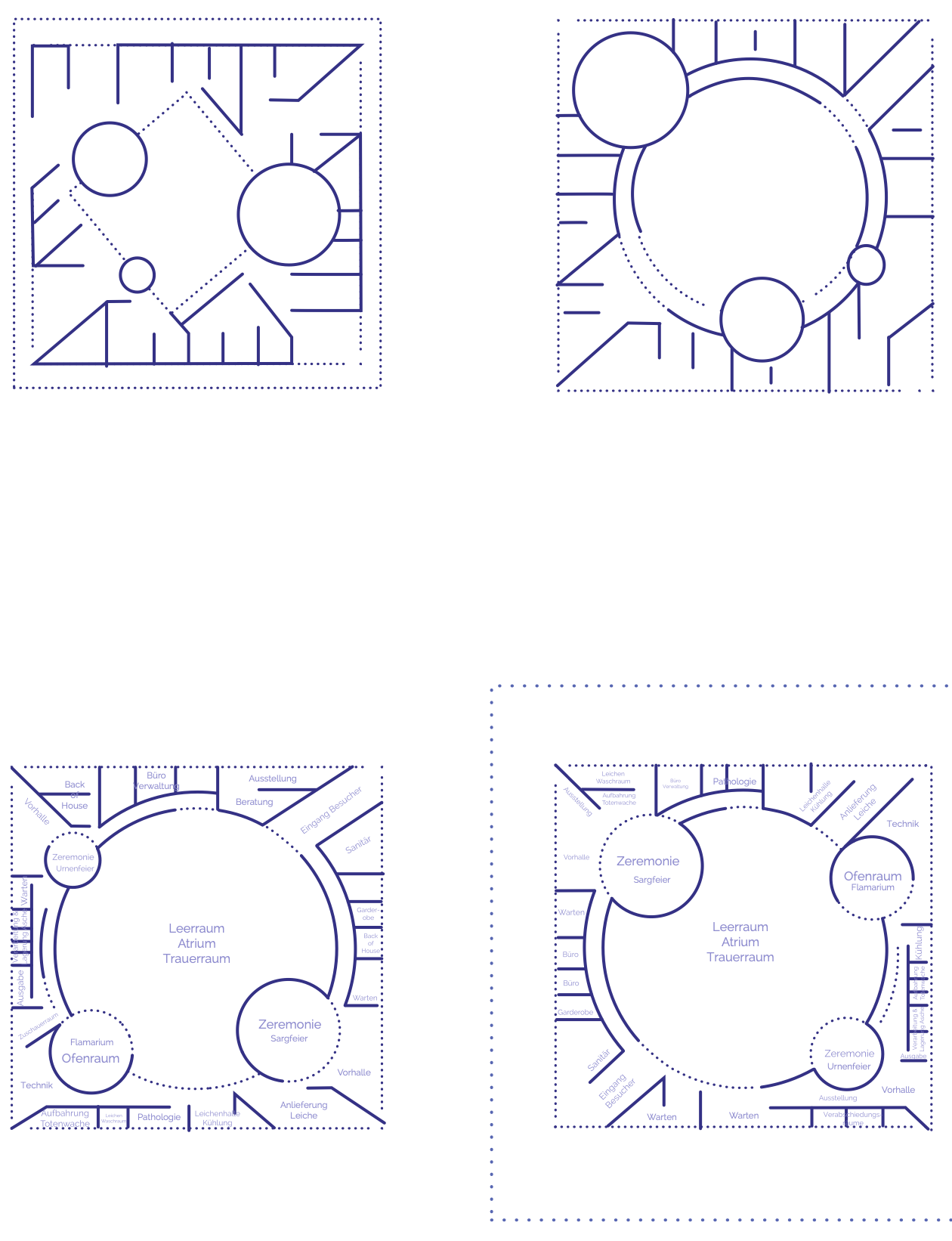Eine architektonische Selbstfindung des modernen Krematoriums
Bernadett Csenteri

[De]
Trotz Technologisierung, Digitalisierung, Säkularisierung und den anderen Revolutionen blieb doch der letzte Akt des Lebens über die Jahrhunderte eine stetige Konstante – wir starben, wir wurden zu Grabe getragen und wir fanden unsere letzte Ruhe in einem Holzkasten unter der Erde. Was eine Zeit lang noch klar mit einem Kirchgang und einem traditionellen Erdbegräbnis abgedeckt zu sein schien, wurde spätestens mit der Wiederentdeckung der Feuerbestattung in Europa auf den Kopf gestellt. Der europäische Bestattungsmarkt weist heute im Jahr 2020 mehr denn je Tendenzen in Richtung Kremierung auf. Hat die Bauaufgabe des Krematoriums also schon im Stillen den Stellenwert einer neuen Sakralarchitektur angenommen?
Um sich dem Verständnis dieser komplexen Typologie zu nähern wird diese zunächst in verschiedenen Aspekten beleuchtet und interpretiert: Historisch problematisch, repräsentativ ungreifbar, kulturell unzuordenbar, raumprogrammatisch komplex: das Krematorium als Bauaufgabe befindet sich im Prozess der Selbstfindung. Was zunächst wie ein Dilemma wirkt, wird zum eigentlichen Befreiungsschlag für uns als Architekten, denn diese Unklarheiten schaffen ein gewisses Maß Freiheit, was die Aussage, Gestaltung und Verortung eines Entwurfes betrifft.
Dieses Potential resultiert letztlich in einem Entwurf, der sich zwar als Erweiterung zum Simmeringer Krematorium lesen lässt aber sich in der Seestadt Aspern gleichzeitig bewusst aus dessen Schatten löst, um den der Gebäudeform eigenen Problematiken an diesem modernen Standort mit einer modernen Lösung zu begegnen.
Ziel der Arbeit ist es, eine Ausdrucksform zu finden, die der Bauaufgabe als neue typologische Vorlage im Sakralbau gerecht wird – ein gebautes Jenseits, das gestalterisch und inhaltlich mit dem Ort verbunden ist aber eine Transzendenz schafft, um die tiefe Bedeutung seiner Inhalte atmosphärisch auszudrücken.
[En]
Despite of technologization, digitalization, secularization and the other revolutions, the last act of life remained a constant over the centuries – after death we were buried and found our last resting place in a wooden box six feet under. For a long time our last journey seemed to be covered by a church visit and a traditional burial. This custom has been turned upside down at last with the rediscovery of cremation in Europe. Today, in 2020, the European funeral market shows more than ever a tendency towards cremation. So has the crematorium itself silently already taken over the position of a new sacred architecture from traditional religious building types?
In order to get to the bottom of this question and understand this complex typology, the building type will first be examined and interpreted from various points of view: Historically difficult, representatively intangible, culturally unclassifiable, complex in terms of spatial program: the crematorium has for a long time remained in the process of self-discovery. What at first sight seems like a dilemma ultimately becomes a liberation: because for us as architects this uncertainty means a degree of freedom in terms of the statement, design and location.
This potential ultimately results in a design project, that can be interpreted as an extension to the Simmering Crematorium. But at the same time the new building consciously breaks out of it‘s shadow by relocating to „Seestadt Aspern“, in order to provide a modern solution to the problems inherent in the typology.
The goal of this thesis is to find a form of expression, that does justice to the building task as a new typological model in sacred architecture – while still remaining connected to its content and surroundings in terms of design. But at the same time the new design will create a transcendence to atmospherically express the deep meaning of ist implied spiritual contents as a form of a built „beyond“.
Ganze Arbeit im Volltext